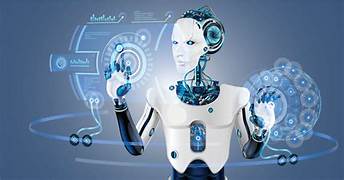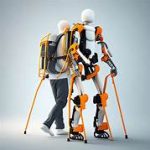Robotic Process Automation (RPA) for Industrial Applications
In the age of digital transformation, industries across the globe are striving to achieve operational efficiency, cost reduction, and scalability. One technology leading this charge is Robotic Process Automation (RPA). Initially associated with repetitive back-office tasks, RPA has grown to encompass a wide range of industrial applications, offering unprecedented benefits in manufacturing, logistics, supply chain management, and more.
This article explores how RPA is revolutionizing industrial operations, its key benefits, challenges, and the future outlook of its implementation.
What is Robotic Process Automation (RPA)?
RPA is a technology that automates repetitive, rule-based tasks using software bots. Unlike traditional automation systems, which require substantial changes to the underlying infrastructure, RPA integrates seamlessly with existing software, mimicking human interactions with digital systems.
Key characteristics of RPA include:
- Task Automation: Automating repetitive tasks like data entry, report generation, and quality checks.
- Non-Invasive Integration: Working across applications without altering the underlying systems.
- Scalability: Adapting to fluctuating workloads by deploying additional bots as needed.
RPA in Industrial Applications
While RPA has gained prominence in office settings, its potential in industrial applications is transformative. Here’s how RPA is being utilized across various industries:
1. Manufacturing
- Inventory Management: RPA bots monitor inventory levels, track stock movements, and place orders when thresholds are reached, ensuring uninterrupted production.
- Quality Assurance: Automated bots perform routine quality checks by analyzing data from sensors, reducing human error and ensuring consistency.
- Production Scheduling: RPA optimizes production schedules based on demand, resource availability, and equipment efficiency.
2. Supply Chain Management
- Order Processing: Automating order entries and tracking reduces delays and minimizes human involvement.
- Supplier Coordination: RPA bots streamline communication with suppliers, managing invoices, and tracking shipments.
- Demand Forecasting: By analyzing historical data and market trends, RPA aids in predicting future demand and adjusting operations accordingly.
3. Logistics
- Route Optimization: RPA analyzes real-time traffic data and logistics constraints to optimize delivery routes.
- Shipment Tracking: Automating tracking and reporting processes ensures real-time updates for customers and internal teams.
- Warehouse Automation: RPA supports warehouse management systems by automating stock audits and streamlining order fulfillment.
4. Energy and Utilities
- Predictive Maintenance: By analyzing sensor data, RPA identifies potential equipment failures and schedules maintenance proactively.
- Regulatory Compliance: Automating compliance reporting ensures adherence to industry regulations with minimal manual effort.
- Billing Automation: Automating billing processes enhances accuracy and reduces turnaround time.
5. Healthcare Manufacturing
- Regulatory Documentation: RPA ensures that all production processes meet stringent healthcare regulations by automating documentation.
- Batch Record Management: Automating the creation and review of batch records improves traceability and compliance.
6. Mining and Natural Resources
- Data Analysis: RPA bots analyze geological data to identify promising mining sites.
- Equipment Monitoring: Automating equipment status monitoring minimizes downtime and optimizes resource usage.
Benefits of RPA in Industrial Applications
RPA offers a host of benefits that make it a compelling choice for industries seeking to modernize their operations:
1. Increased Efficiency
- Bots work tirelessly without fatigue, ensuring high-speed task execution and consistent performance.
2. Cost Reduction
- By automating repetitive tasks, industries can reduce labor costs and allocate resources to more strategic activities.
3. Improved Accuracy
- RPA eliminates human errors in repetitive tasks, enhancing data accuracy and reliability.
4. Enhanced Scalability
- RPA systems can scale up or down based on demand, providing flexibility in operations.
5. Better Compliance
- Automation ensures adherence to regulatory requirements by maintaining accurate records and audit trails.
6. Reduced Downtime
- Proactive monitoring and predictive maintenance minimize equipment downtime, ensuring continuous production.
7. Accelerated Digital Transformation
- RPA acts as a bridge, enabling industries to digitize processes without overhauling legacy systems.
Challenges in Implementing RPA
Despite its numerous advantages, implementing RPA in industrial applications comes with its set of challenges:
1. Process Complexity
- Identifying processes suitable for automation requires a thorough understanding of workflows and dependencies.
2. Initial Costs
- While RPA reduces costs in the long run, the initial investment in software, infrastructure, and training can be significant.
3. Integration Issues
- Seamlessly integrating RPA with legacy systems and IoT devices can be challenging.
4. Resistance to Change
- Employees may resist automation due to fears of job displacement, requiring effective change management strategies.
5. Maintenance and Scalability
- Maintaining and scaling RPA systems requires technical expertise, which may not be readily available in all organizations.
6. Security Risks
- Automated systems are vulnerable to cyberattacks, necessitating robust cybersecurity measures.
Case Studies: RPA Success in Industrial Applications
1. Automotive Industry
- A leading automotive manufacturer used RPA to automate invoice processing and inventory tracking. This reduced processing time by 60% and improved accuracy by 90%.
2. Consumer Goods
- A global consumer goods company implemented RPA for supply chain management, automating tasks like order tracking and vendor communication. The company reported a 30% reduction in operational costs.
3. Energy Sector
- An energy provider used RPA to automate compliance reporting and equipment monitoring. This improved adherence to regulatory standards and reduced equipment downtime by 20%.
The Future of RPA in Industrial Applications
As industries continue to embrace digital transformation, the role of RPA is set to expand. Key trends shaping the future include:
1. Integration with Artificial Intelligence (AI)
- Combining RPA with AI will enable more intelligent automation, capable of handling unstructured data and making decisions.
2. IoT and RPA Convergence
- Integrating RPA with IoT devices will enhance real-time monitoring and control of industrial processes.
3. Human-Robot Collaboration
- RPA will complement human workers, taking over repetitive tasks and allowing humans to focus on creativity and decision-making.
4. Industry 4.0 Adoption
- RPA will play a central role in Industry 4.0, automating interconnected systems and enhancing data-driven decision-making.
5. Cloud-Based RPA
- Cloud-based solutions will make RPA more accessible to small and medium-sized enterprises, driving widespread adoption.
Conclusion
Robotic Process Automation is revolutionizing industrial applications by automating repetitive tasks, enhancing efficiency, and reducing costs. From manufacturing and logistics to energy and healthcare, RPA is driving significant advancements across sectors.
However, its successful implementation requires addressing challenges like integration complexities, security risks, and resistance to change. With advancements in AI and IoT, RPA is poised to become an integral part of industrial operations, paving the way for a future where industries are more efficient, agile, and innovative.
RPA represents more than just automation—it is a key enabler of the industrial transformation that will shape the next generation of production and services.


